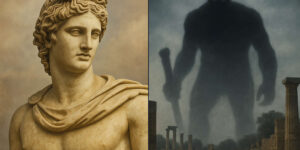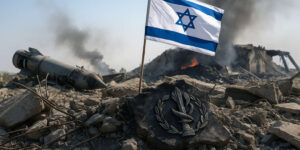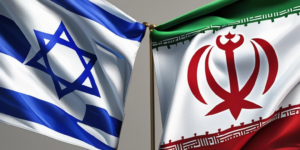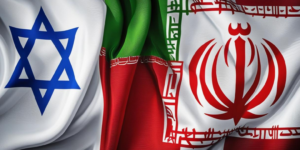Who Is Pope Francis? Really?
Moreover, it was a time of great ferment in the Catholic Church, especially in Latin America, with the Jesuits leading the way in controversial social justice movements such as liberation theology. Bergoglio and his followers were also dedicated to the poor, but preferred different strategies. For this and a variety of reasons, he found himself on the outs with the Jesuit headquarters in Rome and with many Jesuits in Argentina.
“He was silenced as part of the new provincial leadership’s attempt to clamp down on what they regarded as dissent,” writes Austen Ivereigh, author of a biography of Francis titled “The Great Reformer: Francis and the Making of a Radical Pope.”
He was effectively sent into exile by the Jesuits, first to Germany to write a doctoral thesis. But he was deeply unhappy there and never finished it, returning after little more than a year. Then he was immediately sent to the remote city of Córdoba, more than 400 miles from Buenos Aires. He would spend two years there. “I lived a time of great interior crisis when I was in Córdoba,” he recalled.
“Bergoglio emerged from that spiritual crisis an utterly different man,” writes Paul Vallely, author of “Pope Francis: The Struggle for the Soul of Catholicism.” “He developed a new model of leadership, one which involved listening, participation and collegiality. … He had transmuted from an authoritarian reactionary into the figure of radical humility who is today turning the Vatican upside down.”
An appointment as auxiliary bishop in 1992 put him on a hierarchical track that Jesuits typically avoid. In 1998, he became a bishop and immediately doubled the number of priests assigned to work directly with the poor, leading many to dub him the “Slum Bishop.” He also visited the poor himself whenever he could. He lived simply in a small apartment, cooking his own meals and taking public transportation.
He avoided the receptions and fundraisers that churchmen of his rank would attend as a matter of course. He even gave up watching television — even his beloved soccer team — and spent what little down time he had with close friends and family.
Mainly he devoted himself to being a pastor. He took no vacations — and hasn’t done so as pope, refusing to use the papal summer residence outside Rome in the hilltop town of Castel Gandolfo.
His was a “theology of the people,” or the “theology of the kitchen table,” as the Rev. Humberto Miguel Yanez, an Argentine Jesuit theologian in Rome, puts it. As Francis likes to say, “Realities are more important than ideas.”
In Latin America, however, Bergoglio quietly became an influential figure within the hierarchy, and in 2001, he was named a cardinal, eligible to participate in the papal conclave.
When Pope John Paul II died in April 2005 after a long and public battle with a degenerative nerve disorder, Bergoglio emerged as a possible successor and the only serious contender besides Cardinal Joseph Ratzinger, who ultimately was elected Pope Benedict XVI.
After the 2005 conclave, Bergoglio returned to Argentina and went about his ministry as usual. But eight years later, on Feb. 11, 2013, everything changed.
In what was expected to be a routine Vatican ceremony, Benedict stunned his audience by announcing that he would resign as pope effective Feb. 28. No pope in six centuries had retired.
When cardinals gathered to choose a new pope, many said did not want anyone over 70. Bergoglio was then 76, and seemed out of the running. But during the closed-door meetings before the conclave, something changed. Each cardinal was allowed five minutes to talk about what he saw as the main issues facing Catholicism and what the next pope might need to do.
Bergoglio got straight to the point: The church was “self-referential” to the point of sickness, he said, immersed in a self-destructive “theological narcissism” that led its leaders “to give glory only to one another,” not the rest of the world. It was a “worldly” church, he said, that had forgotten its mission.
In the New Testament, he continued, “Jesus says that he is at the door and knocks. Obviously, the text refers to his knocking from the outside in order to enter. But I think about the times in which Jesus knocks from within so that we will let him come out. The self-referential church keeps Jesus Christ within herself and does not let him out.”
The cardinals went into the conclave, and 24 hours later, Jorge Mario Bergoglio came out on the balcony of St. Peter’s as Pope Francis. He did not want the job, he said, but accepted it as a sign from God.
“On the night of my election,” Francis told a friend, a fellow Latin American bishop, “I had an experience of the closeness of God that gave me a great sense of interior freedom and peace, and that sense has never left me.”
Aides say that if he is humble, he is also wise about the ways of the church, and especially the challenges of reforming the Roman Curia, one of his first and most daunting tasks. He has even been described as a chess master when it comes to church politics.
But above all he wants the Catholic Church get out of its own way, to accompany those on the margins of society, all those left behind by the “throwaway culture” of the modern world. Mercy is the byword of his pontificate, and he wants to show the world that the church welcomes everyone.
“Who Is Jorge Mario Bergoglio?” Spadaro asked him in 2013.
“I am a sinner,” Francis responded. “This is the most accurate definition. It is not a figure of speech, a literary genre. I am a sinner.”
But he believes he is saved by grace, by God’s mercy, and that the church and the world have the same opportunity — if he can persuade them to take the leap of faith.




























































